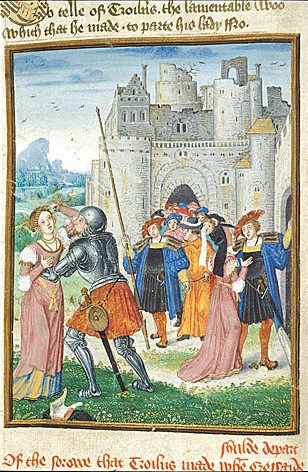
March 23, 2016, by Stephen McKibbin
How Lovesick can you get?
This blog post was written by Michael Leahy, a Teaching Associate in the School of English.
Today, a good deal of controversy surrounds the issue of medicalisation as an increasing amount of behaviours or complaints assume a medical character. Attention deficit hyperactivity disorder, chronic fatigue syndrome and generalised anxiety disorder are all examples of conditions that have in recent years become defined as treatable disorders. Debates surrounding medicalisation, and the extent to which it subjects individuals to scrutiny and control by governments and multinationals, can benefit from a greater consideration of the cultural history of medicine. Studying late medieval representations of diseases and illnesses reveals that the boundaries between the “medical” and the “nonmedical” have always been porous.
An example of a condition present in many late medieval medical treatises, and notably absent from the A-Z of medical conditions on the NHS website, is amor hereos, better known as lovesickness. Writers, influenced by classical works and their Arabic commentaries, advised readers on how to identify and treat the “disease”. Typical signs and symptoms included anxiety, confusion, dry eyes, loss of appetite, sallow skin and a disordered pulse. Physicians were required to try to distract the patient by encouraging him to listen to soothing music, to speak to old women who disparage the object of the lover’s affections and to sleep with other women. (It is notable that for most medical authors lovesickness was a condition suffered exclusively by men).
In his adaptation of the story of two Trojan lovers, Troilus and Criseyde, the fourteenth-century English poet Geoffrey Chaucer shows signs of reading these accounts of lovesickness. He depicts the love-struck Troilus lying in bed, pale and confused, professing that he is about to die. But Chaucer also probes the extent to which lovesickness should be understood entirely as a malady. This is exemplified in an encounter between Troilus and his cynical advisor Pandarus. Pandarus wants Troilus to act sick in order to lure Criseyde into an intimate meeting with him. An exasperated Troilus counters
“Iwis, thow nedeles
Conseilest me that siklich I me feyne,
For I am sik in ernest, douteles,
So that wel neigh I sterve for the peyne”.
Quod Pandarus, “Thow shalt the bettre pleyne,
And hast the lasse need to countrefete,
For hym men demen hoot that men seen swete”. [1]
(“Indeed, you counsel me needlessly that I should feign sickness, because, without doubt, I am truly sick so that the pain has almost killed me.” Pandarus replied, “You shall complain all the better and have less of a need to counterfeit. For men judge that a man is hot when they see him sweat.”)
The wily Pandarus understands that it is the pose of sickness, not its physical reality, which is most important in advancing Troilus’s cause of winning Criseyde. While insisting that bodily signs can reveal internal, subjective symptoms, his insistence that Troilus counterfeit his illness suggests that lovesickness could be seen as a courtly pose rather than simply a set of bodily imperatives.
Chaucer’s characterisation of lovesickness as both a set of symptoms and a type of performance has relevance for our understanding of medicine and medicalisation today. To what extent do particular illnesses generate corresponding identities? Does being sick require patients to act in specific ways? It also suggests that the identification of some medical conditions may reflect the concerns of a particular culture. From this perspective, it makes sense that late medieval culture, with its ideal behavioural model of courtly love, would regard an excessive amount of amorous emotions as a medical issue. Similarly, a fast-paced, consumer-focused modernity privileges and seeks medical cures for anxiety-related conditions while leaving lifestyle experts, advice columnists and clairvoyants to treat lovesickness.
[1] Geoffrey Chaucer, Troilus and Criseyde, in The Riverside Chaucer, gen. ed. Larry D. Benson, 3rd edn. (Oxford and New York: Oxford University Press, 1987) Book II, 1527-33.
No comments yet, fill out a comment to be the first

Leave a Reply